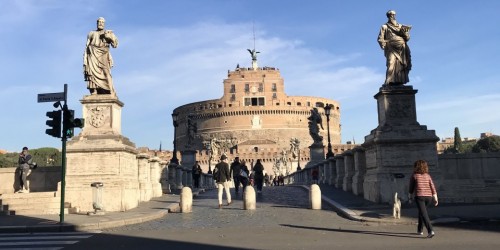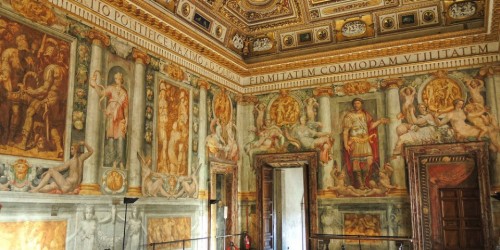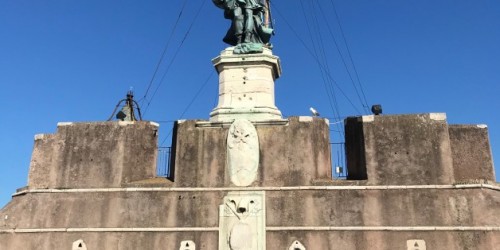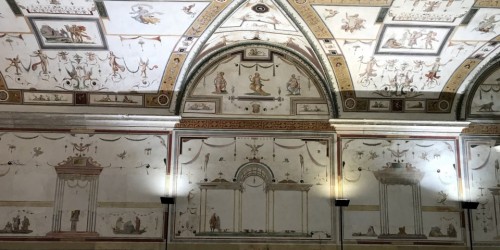
 Rome in Tours
Rome in Tours

Tours
Castel Sant'Angelo Tour
Mausoleum, Fortress, Prison, Papal Apartment and National Museum
- Avoid the crowd
- Duration
- 2,5h
- Meeting Point
- View on Google Maps
- Meeting Point
- Piazza di Ponte Sant'Angelo
- Meeting Time
- 10 am
- Included
- Entrance fees to the Museum
- Sites Visited
Ambulacrum of Bonifacio VIII, Dromos and Atrium, Helicoidal ramp, Cordonata of Paul III, Marcia ronda, Saint Matthew rampart, Saint Mark rampart, Passetto di Borgo, Saint Luke rampart, Saint John rampart, Diametral ramp, Room of the urns, Armory, Court of the Angel, Room of Justice, Room of Apollo, Chapel of Leo X (from outside), Court of Alexander VI, Loggia of Julius II, Loggia of Paul III, Paolina Hall, Perseus Room, Eros and Psyche Room, Hall of the Library, Adrianeo's Room, Festoons' Room, Treasure Room, Castellan apartment (from outside), Round Room, Room of the Columns, Angelo terrace (take photos)
What to expect
The castle is the main witness of the historical changes of Rome. Like a time machine, its loggias, rooms and galleries are freighted of the events the city has been through, like browsing a history book where each page has left a tangible mark on its walls.
Even if a castle, by definition, is a closed space of defense, almost detached from its context, this fortress shared the destiny of the city's heyday and decay so intrinsically.
I've always seen this building as a landmark expressing the control of the Church over the population, a bulwark against the attitude to crime and I still have the feeling of almost entering a prison more than a monument with all that this entails in terms of reverence and fear.
I'll share with you stories of prisoners with their hopes and despair and characters who made the history of the Castle like Emperors, Generals, Kings and Popes to finally provide a deep insight of the roman society through the centuries in a monument that still carries the burden of time and events.





